Back in 2012, Google still worked straightforwardly.
If a user typed an exact keyword into the search bar, like “best DSLR camera,” Google would look for pages with that exact phrase.
If your content had those exact words, you stood a good chance of appearing in search results.
Search queries started getting longer and more conversational.
People were asking questions like, “What’s the best DSLR camera for beginners under $500?”

These longer questions posed challenges for search engines.
Things changed in 2013. Google introduced the Hummingbird update, which changed how search engines understand queries. This is where semantic search engine optimization (SEO) comes in.
This blog post is about semantic SEO and how it can improve your search engine rankings.
We’ll analyze the evolution of search engines, the importance of understanding search intent, and practical strategies to make your generative AI marketing more user-friendly, relevant to semantic search, and effective.
What is Semantic SEO?
Semantic SEO understands the meaning behind search queries and delivers content that matches that intent.
Instead of just looking at word-to-word keyword matches, it considers the context and relationships between words.
Does Semantic SEO mean we can ignore keywords?
Not at all. Keywords are still important, but now their context and the user’s intent are even more crucial.
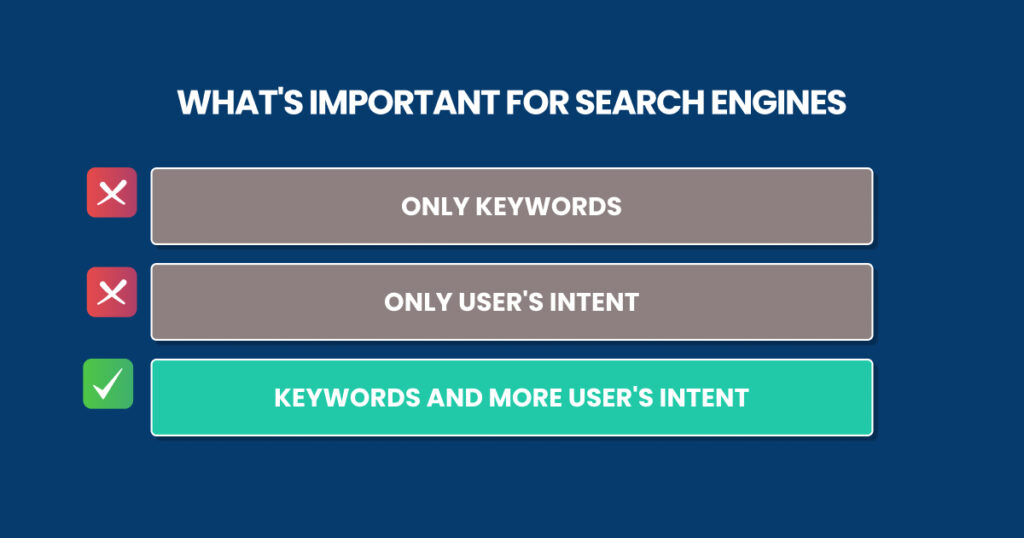
Semantic SEO is smart – it understands the user’s intent and provides answers that truly match their needs.
For example, when someone searches for the “best camera for travel,” they might be looking for a lightweight option, a model with a long battery life, or a durable camera.
Content intelligence helps brands tailor their content to match such nuances, ensuring that it ranks higher in search results and provides more value to users.
Entity-Based SEO
One of the aspects of semantic SEO is entity-based SEO. Entity-based SEO is an integrated approach for content organization and optimization.
For example, consider Lily’s journey.
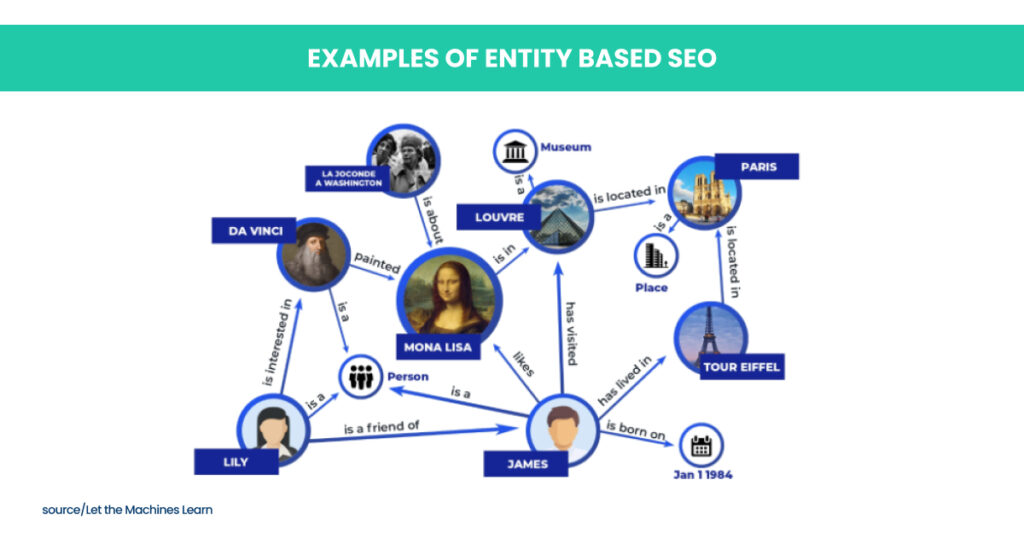
If Lily frequently searches for information about Da Vinci, Google identifies her interest in Da Vinci based on her search history and the content she consumes.
Knowing this, Google might suggest related content, like the “Mona Lisa,” one of Da Vinci’s famous works.
If Lily also shows interest in vacation destinations, Google might suggest Paris as a travel spot where she can explore the Mona Lisa at the Louvre.
You should look at the main topics of your content and think about related entities that might interest your audience.
Why Is Semantic SEO Important?
Semantic SEO is crucial because it aligns with how search engines work to understand and respond to user queries.
Why should you pay attention to it?
- Better Understanding of User Intent: Search engines have become smarter. They no longer just look for exact keyword matches but try to understand what the user is really looking for. This means they can provide more accurate and useful results based on the user’s intent, not just the words they typed.
- Improved Voice Search Results: With the rise of voice search, people are asking questions more conversationally. For example, someone might ask, “What’s the best camera to take on vacation?” instead of typing “best travel camera.” Semantic search is designed to understand these natural language queries, making your content more likely to appear in voice search results.
- Enhanced Content Relevance: Semantic SEO helps search engines understand the broader context of your content. Instead of focusing only on keywords, it considers the relationships between words and the overall topic. This makes your content more relevant to a wider range of searches, improving its chances of being found.
- Higher Search Engine Rankings: Optimizing for semantic search, your content is more likely to rank well for various related queries. This is because search engines recognize the depth and relevance of your content, not just its keyword density.
- Better User Experience: Your content becomes more thorough and informative, so you engage more users who get the answers to their questions.
- Adapting to Advanced Algorithms: Search engines are continuously improving their algorithms with advanced natural language processing techniques. By leveraging semantic SEO, you ensure your content remains aligned with these sophisticated search algorithms, keeping it relevant and competitive.
- Increased Website Traffic: As your content becomes more relevant and visible in search results, you’ll attract more visitors.
Semantic SEO Strategies
To make the most of semantic SEO, it’s important to use strategies that match how search engines understand and rank content.
Here are some simple tactics to optimize your content and improve your rankings.
1. Use Structured Data
Structured data is a key part of semantic SEO. Using structured data makes your content more visible and relevant, helping search engines deliver better results to users. Here’s how you can use structured data:
- Add Schema Markup: Schema markup is a type of structured data that gives search engines clear information about your content, like product details, reviews, or event dates.
- Improve Rich Snippets: Structured data can make your search results more appealing with rich snippets. These snippets show extra information like ratings, prices, and images, making your listings more attractive and informative.
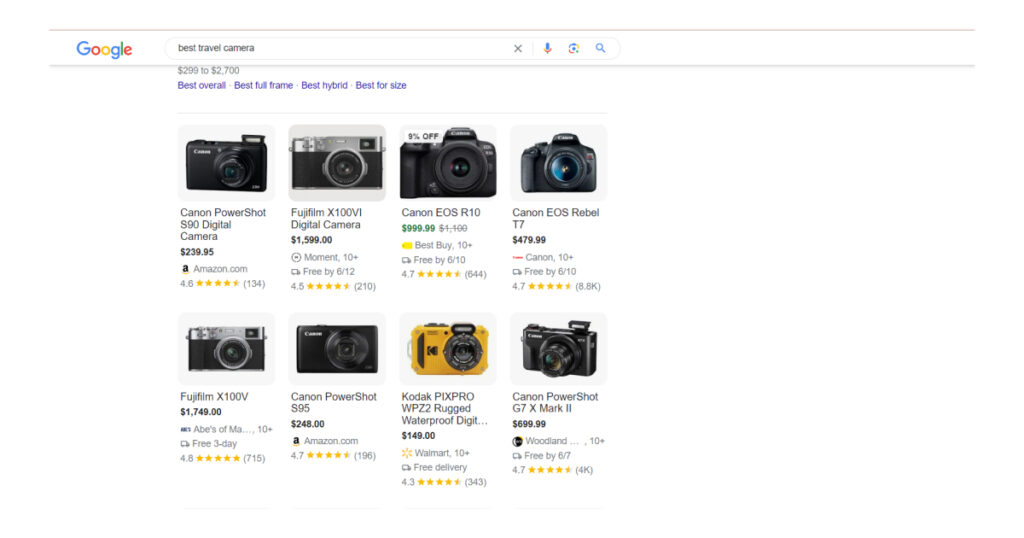
- Improve Click-Through Rates (CTR): Using structured data can make your search results stand out, leading to more clicks. When users see detailed and relevant information right in the search results, they’re more likely to click on your link.
- Support Voice Search: Structured data is great for voice search because it provides clear, concise information that search engines can easily use to answer voice queries.
- Stay Updated: Regularly update your structured data to keep it accurate and relevant. As search engines evolve, so do the best practices for structured data, so staying informed is important.
2. Creating High-Quality, Relevant Content
Another crucial semantic SEO strategy is creating high-quality, relevant content. Here’s how you can do it:
Understand Your Audience
To create content that resonates, you first need to understand your audience. Research who they are, what they’re looking for, and what problems they need to solve.
For example, if people search for “how to train a puppy,” they might be new pet owners looking for beginner-friendly tips. Understanding this improves your SEO semantic writing.
You create content that addresses their needs, like basic training techniques, common mistakes to avoid, and helpful resources.
Use Pillar and Spoke Strategy
Organize your content using the pillar and spoke model. A pillar page is a broad topic, while spoke pages are more specific articles that link back to the pillar page.
This structure helps search engines correlate different pieces of content on your site, improving your SEO semantic writing and making it easier for users to find the information they need.
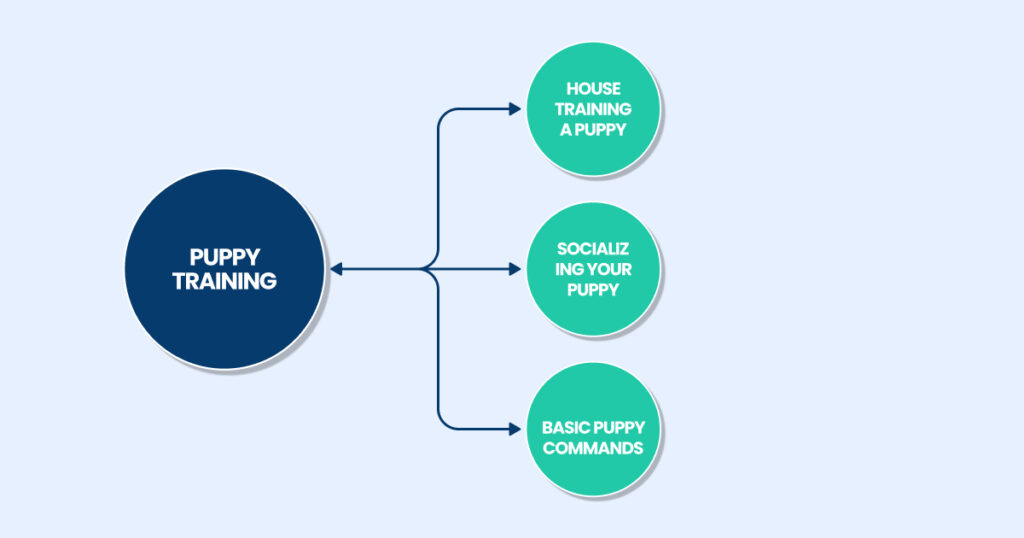
For example, if your pillar page is about “puppy training,” your spoke pages could cover topics like “house training a puppy,” “basic puppy commands,” and “socializing your puppy.”
3. Write Topic Outlines in Your Blog
Plan out all the subtopics you willyou’re cover in each blog post.
Google understands that your content is comprehensive and useful since it covers the topic thoroughly.
For example, if you’re writing a blog post about “Content Marketing Strategies,” your outline might include subtopics like:
- Understanding Your Audience
- Creating a Content Calendar
- Types of Content (blogs, videos, infographics)
- Content Distribution Channels
- Measuring Content Performance
4. Cover “People Also Ask” Questions
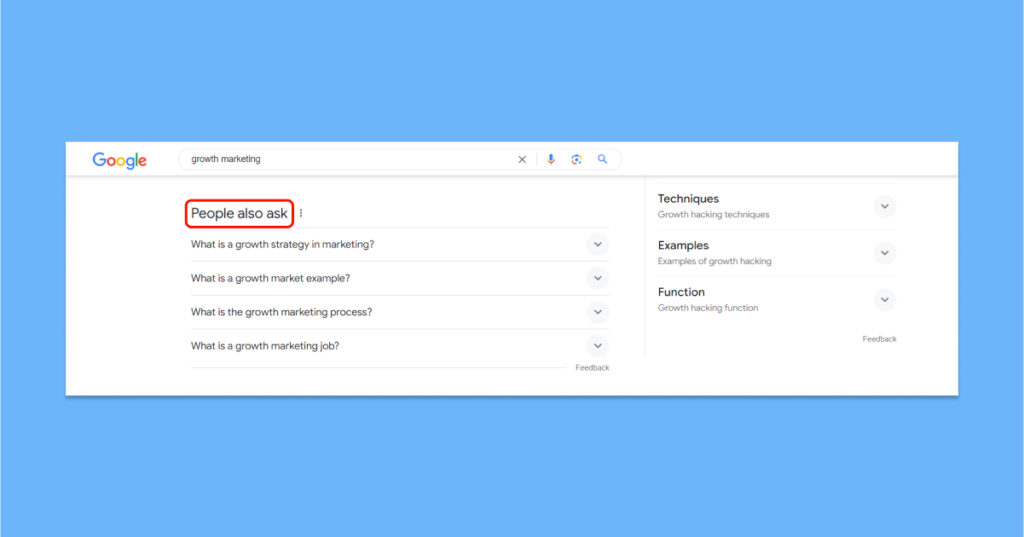
Another effective SEO content marketing strategy is to cover “People Also Ask” questions in your content.
These questions appear in search results when users search for a particular topic.
Let’s say you write a blog post on a topic like “Growth Marketing.” You can directly cover “People Also Ask” questions in a dedicated section or integrate the answers into your content.
Since people actually ask these questions, covering them increases your chances of ranking high and meeting user intent.
5. Target Multiple Similar Keywords
Thanks to Semantic SEO, we know that Google understands when topics are similar.
This means you can target multiple variations of the same keywords with a single page. Google now shows nearly identical results for different versions of the same search queries.
For example, if you’re writing about “home cleaning services,” you might also want to target keywords like “residential cleaning services,” “house cleaning services,” and “professional home cleaning.”
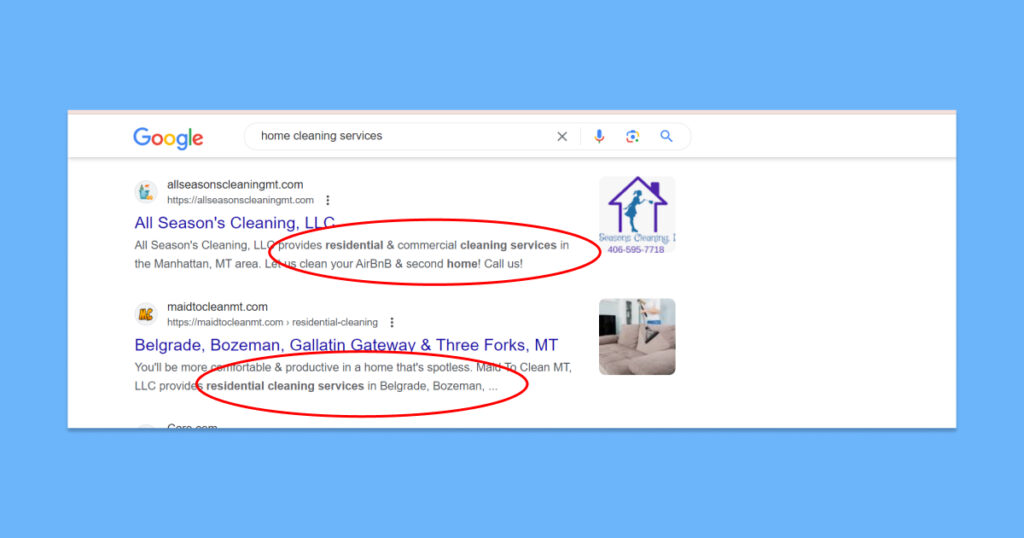
Thanks to semantic search, Google understands that these topics are similar.
Instead of focusing on one specific keyword, optimize your post around several relevant keywords.
Besides, instead of chasing long-tail keywords, experts recommend creating content around semi-competitive “medium-tail” keywords.
These keywords are not too broad but still have a decent search volume.
If your content is good and comprehensive, Google will automatically rank it for many long-tail keywords as well.
6. Use Latent Semantic Indexing (LSI)
Search engines use the Latent Semantic Indexing (LSI) technique to understand the relationship between words and concepts in content.
Instead of exact keyword matches, LSI analyzes patterns and the context in which words appear to better understand the content’s overall topic.
To effectively use LSI keywords, follow these strategies:
- Identify Related Terms: Look for terms and phrases that are related to your main keyword. These can be synonyms or contextually related words. If you target “digital marketing,” related terms might include “online advertising,” “SEO,” and “content marketing.”
- Integrate Naturally: Use LSI keywords naturally within your content. Avoid keyword stuffing. For instance, if you’re writing about “digital marketing strategies,” you can naturally mention related terms like “social media marketing” and “email campaigns.”
- Use Tools: There are several tools available to help you find LSI keywords. Tools like LSIGraph, Google’s own search suggestions, and related searches at the bottom can provide ideas for related terms to include in your content.
7. Use Conversational Keywords
As more people use voice search, they tend to ask questions as they talk casually, without using academic or formal language.

So, if you want them to find your web content easily, incorporate casual and conversational keywords into your content. This strategy aligns with semantic search principles and helps improve your semantic SEO.
For instance, if you’re writing a blog post about “healthy eating,” you might include conversational keywords and phrases like “how can I eat healthier?” or “tips for eating better on a budget.” These are the types of questions people might ask their voice assistants.

By using these natural, conversational phrases, you make your content more relevant to the way people actually talk and search.
Adopt the Future of SEO
So, if you want your content to thrive in 2024 and beyond, it’s time to welcome the future of SEO: Semantic SEO.
By implementing the strategies we outlined in this guide, you can supercharge your content’s performance in search engine rankings:
- Use structured data to make your content more digestible for search engines.
- Craft high-quality, relevant content that resonates deeply with your audience.
- Tackle “People Also Ask” questions head-on to amplify your visibility in search results.
- Target multiple similar keywords within a single page to comprehensively cover your topic.
- Integrate latent semantic indexing (LSI) keywords to enrich context and relevance.
- Consider voice search by incorporating conversational keywords.
Leverage entity-based SEO to forge connections between related topics and elevate content significance.

